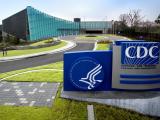In releasing its proposed 2016 budget yesterday, the Obama administration offered an array of generous increases in infectious-disease (ID)-related programs, and seasoned them with a suggestion to unify federal food safety activities under one agency, a long-discussed idea that has never gained traction in Congress.
The budget plan has drawn mostly cheers from public health and medical groups, with a big boost in funds to fight antimicrobial resistance getting an especially warm response.
The increases in ID-related programs are in keeping with an overall fiscal year 2016 plan that totals $3.9 trillion, ignoring "sequestration" budget restraints set to take effect this spring, according to media reports. With Republicans in control of Congress, many of the new spending proposals are seen as having little or no chance of approval.
On the ID front, including antibiotic resistance, foodborne diseases, and bioterrorism preparedness, "We did very well," said Jeff Levi, PhD, executive director of the Trust for America's Health (TFAH), a nonprofit public health advocacy group in Washington, DC. "For all of these the budget has major increases in funding, and an important policy innovation in seeking a unified food safety agency," he told CIDRAP News.
"Overall the numbers are very good, but there are a few weak spots," Levi said. He noted that the administration is proposing to slash funds for several programs for preventing chronic diseases, such as the Preventive Services Block Grant, which he said is used by health departments to maintain their capabilities and services.
$1.6 billion for food safety
A White House overview of proposed healthcare spending says the plan includes a total of $1.6 billion for food safety, including a $301 million increase for the Food and Drug Administration's (FDA's) efforts to implement the Food Safety Modernization Act (FSMA), enacted in 2011.
The FDA offered a different number in its own statement, saying the increase in FSMA funding amounts to $109.5 million out of its total $4.9 billion proposal. That total is a 9% increase over this year's level.
The US Department of Agriculture (USDA) is asking for slightly less money for its food safety efforts: $1.012 billion, down from $1.016 billion this year, according to a Food Safety News report. The agency said that reflects expected savings from the new poultry inspection program, which reduces the number of USDA inspectors on production lines.
Big boost for fighting resistant bacteria
The White House overview said the administration is proposing to increase spending on antimicrobial resistance programs by $550 million over the 2015 level, which would fully fund the National Strategy on Combating Antibiotic Resistant Bacteria. One goal of that initiative is to cut Clostridium difficile infections in half by 2020.
In a statement, the Infectious Diseases Society of America (IDSA) said the budget includes a total of $1.2 billion for antimicrobial resistance programs, including $650 million for the National Institutes of Health (NIH) and the Biomedical Advanced Research and Development Authority (BARDA), part of the Department of Health and Human Services (HHS).
The American Society for Microbiology (ASM) said the plan nearly doubles HHS funds for antimicrobial resistance (to almost $1 billion), quadruples USDA research and surveillance on resistance ($77 million), and increases efforts in healthcare settings managed by the Departments of Veterans Affairs and Defense ($85 million and $75 million).
The boost for antimicrobial resistance programs drew praise from the Society for Healthcare Epidemiology of America (SHEA), as well as from IDSA and ASM.
"The request for funding shows the Administration's commitment to supporting and driving a national strategy on antimicrobial resistance that improves patient care and preserves our ability—as both doctors and patients—to fight infections," Anthony Harris, MD, MS, president of the SHEA Board of Trustees, said in a statement yesterday.
Sizable increase for CDC
The administration is proposing a budget of $11.5 billion for the Centers for Disease Control and Prevention (CDC), an increase of $250 million over this year's level, according to an HHS overview of its proposed budget.
The overview says that total includes, among other things:
- A $294 million increase in activities related to emerging and zoonotic diseases, to $699 million
- A $37 million increase in funds for the Strategic National Stockpile of drugs and medical supplies, to $571 million
- $1.4 billion for public health emergency preparedness, an increase of $29 million
- $264 million for the CDC share of antimicrobial resistance funds
On the other hand, the plan includes a $50 million cut in CDC money for immunization services, which drew an objection from the National Association of County and City Health Officials (NACCHO). In a statement, the group said that money supports vaccine purchases and local, state, and national immunization operations.
TFAH's Levi said he shared NACCHO's concern about that cut, adding, "The rationale that the administration gives is that these are now covered services under the Affordable Care Act, and therefore health departments should be billing for them. There's an argument whether states and localities are ready to do that."
At the same time, Levi noted that the budget lists a $128 million increase for the CDC's Vaccines for Children program, which serves certain groups of disadvantaged children. Total proposed funding for the program is $4.1 billion, according to HHS.
BioShield funding
As for biodefense programs, the White House overview says the budget more than doubles support for the BioShield program, to $646 million, continuing efforts to develop new medical countermeasures.
For global health, the administration is seeking increased funds to fight polio, support Gavi, the Vaccine Alliance, and global HIV/AIDS programs, according to the overview.
Unifying food safety efforts
Along with the budget proposal, the administration is proposing to consolidate federal food safety programs into one agency. Most food safety programs are now divided between the FDA and the USDA's Food Safety and Inspection Service, but several other agencies are involved as well.
The new agency would be within HHS but independent from the FDA, according to a Reuters report yesterday.
The budget proposal stated, according to Reuters, "A single Federal food safety agency would provide focused, centralized leadership, a primary voice on food safety standards and compliance with those standards, and clear lines of responsibility and accountability that will enhance both prevention of and responses to outbreaks of food-borne illnesses."
The story said the plan is similar to what is envisioned in a bill introduced last week by Sen. Richard Durbin, D-Ill., and Rep. Rosa DeLauro, D-Conn.
Michael Taylor, the FDA's deputy commissioner for foods and veterinary medicine, declined to say whether FDA officials would support such a change, according to Reuters. "It depends on how it's done," he said.
Levi said TFAH is "delighted" to see the proposal to unify food safety efforts, having supported the idea for 7 years. "It's a recognition that we have a dysfunctional approach to how we address food safety," he commented.
But Chris Waldrop, director of the Food Policy Institute at Consumer Federation of America (CFA), criticized the proposal.
"HHS is a massive organization," Waldrop in a statement. "A new food safety agency would be lost among the other priorities of the Department, and would likely not receive the recognition or resources necessary for it to be effective. That is why CFA and other groups have called for an independent single food safety agency," outside the FDA and USDA, which is what the Durbin-DeLauro bill calls for.
He also asserted that trying to merge FDA and FSIS food safety programs now would undermine the FDA's efforts to implement the FSMA.
See also:
White House overview of proposed 2016 healthcare budget
Feb 2 FDA statement on its budget request
Feb 3 Food Safety News story
Jan 28 ASM statement
Feb 2 SHEA statement
HHS budget highlights (158 pages)
Feb 2 NACCHO statement
Feb 3 TFAH statement
Feb 2 Reuters story
Feb 2 CFA statement























